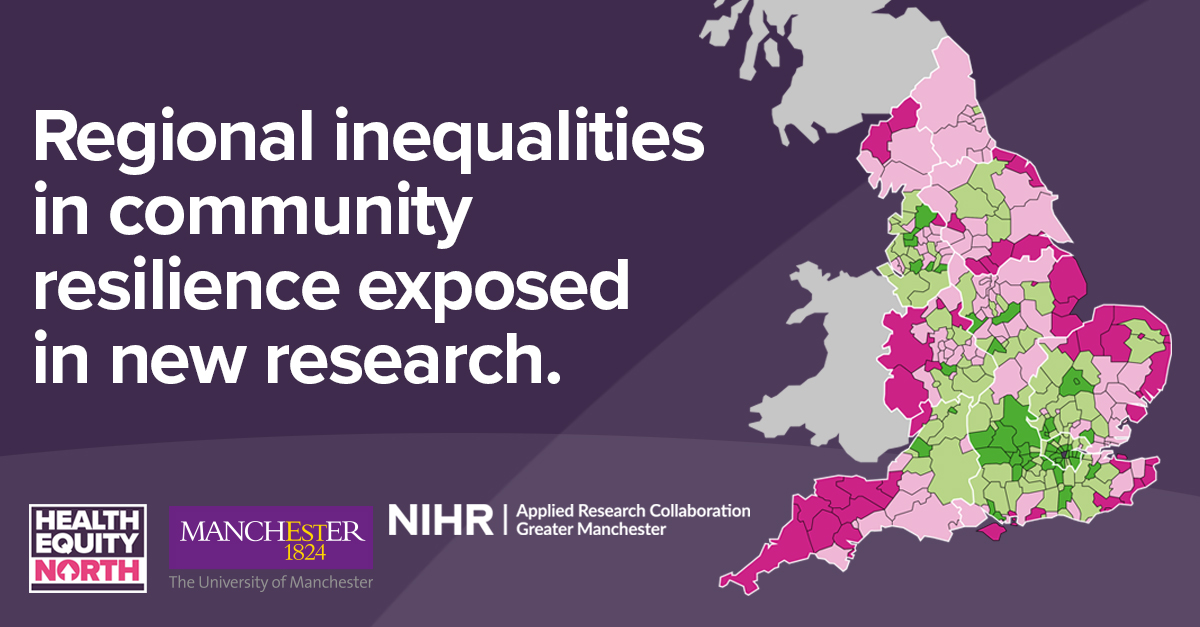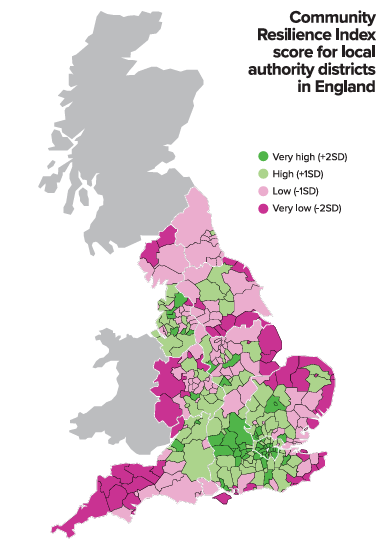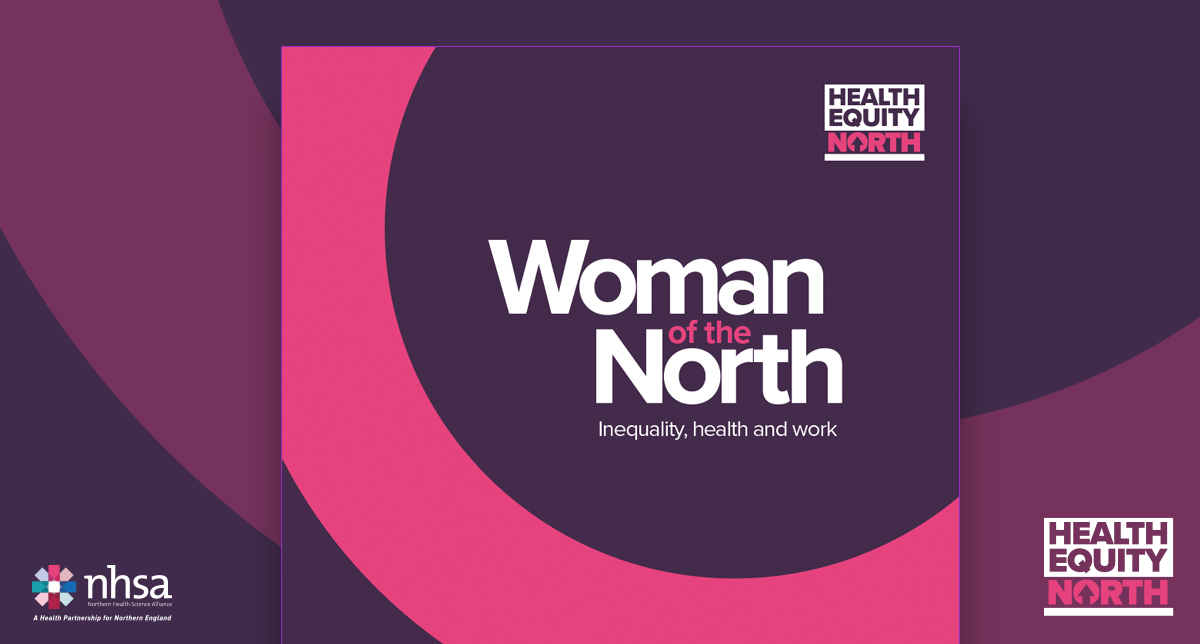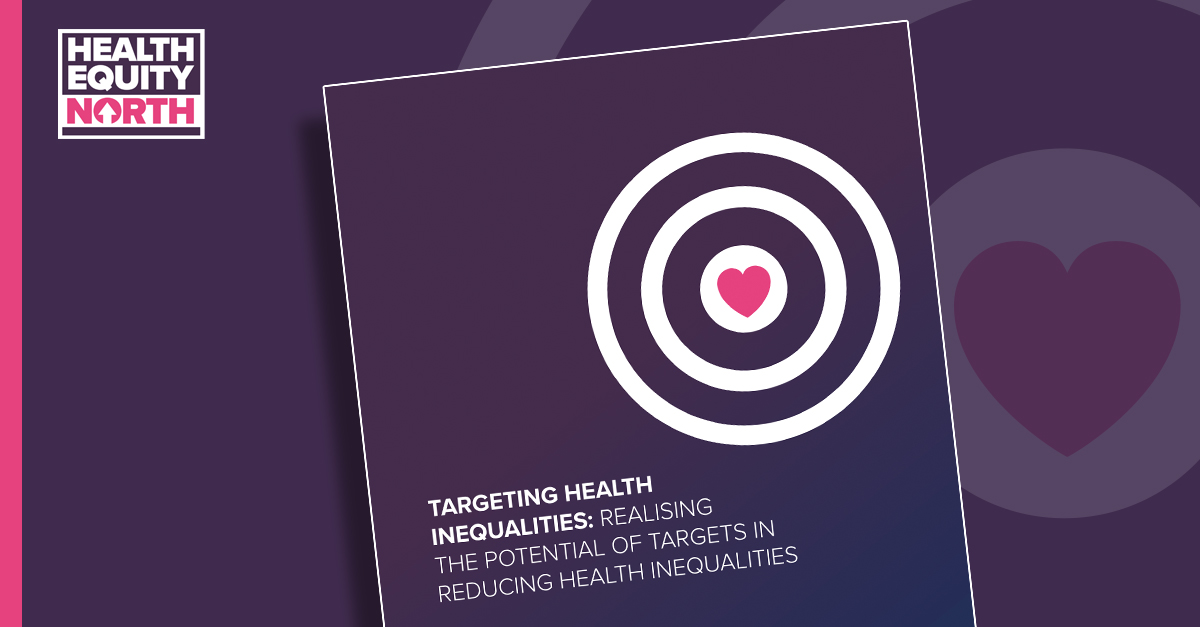Regional inequalities in community resilience exposed in new research

Coastal, rural and areas in the North of England are less able to withstand and recover from adverse events, according to new research which highlights regional disparities in community resilience.
The analysis shows that regionally, Yorkshire and the Humber and the North East had the lowest resilience scores, while London and the South East had the highest.
In addition, rural and coastal areas showed significantly lower resilience compared to urban and inland areas of the country.
Led by academics from Health Equity North (HEN), the University of Manchester and the National Institute for Health and Care Research (NIHR) Applied Research Collaboration Greater Manchester (ARC-GM), the study examined local authority data to identify geographical patterns in different communities’ ability to navigate and thrive in the face of prolonged challenges.
The research, which has been published in the International Journal of Environmental Research and Public Health, provides the first detailed assessment of community resilience in England at a local authority level.
The timely findings come off the back of a number of “chronic shocks” in the UK including the global financial crisis, the social and economic impacts of leaving the European Union, the COVID-19 pandemic and an ongoing cost of living crisis.
Researchers developed a Community Resilience Index (CRI) which measures multiple elements, such as employment, education, social and community context and housing, to measure resilience in local authorities, enabling them to be ranked from most to least resilient.
It is hoped the framework will serve as a tool for policymakers to identify priority areas and to guide the equitable allocation of funding to address geographical inequalities.
The study found that:
- The average community resilience index score for local authorities in England was 83.1, ranging from 53.3 in Tendring to 108.9 in Elmbridge.**
- Yorkshire and the Humber and the North East were the least resilient regions, with CRI scores of2 and 77.5, respectively. Comparatively, London and the South East were the most resilient regions, with scores of 95.2 and 87.3 respectively.
- A North-South disparity was evident with the North of England having lower resilience scores (80.6) than the South (including the Midlands) at 83.9.
- Coastal areas featured heavily in the lowest ranking local authority areas with significantly lower resilience scores (76.0) compared to inland areas (84.9).
- Similarly, rural areas were less resilient scoring 79.1 compared to 85.1 in predominantly urban areas.
When examining the specific social and environmental measures assessed as part of the overall index, there were further geographical disparities found:
- Access and infrastructure: London achieved the highest score followed by the North West and North East. The North of England scored higher in this domain than the rest of the country conversely, coastal and rural areas scored lower.
- Economic wellbeing and opportunity: The South East and London scored highest, indicating robust economic activity and employment opportunities. The North overall and coastal areas had lower scores, suggesting lower economic resilience.
- Social capital and connectivity: London again scored highest. There was no significant North-South divide or difference between coastal and inland areas. However, rural areas scored lower.
- Diversity and inclusion: There were higher scores for the North of England and rural areas, while coastal areas had significantly lower scores.
- Equity and stability: London was the most resilient and the North East was the lowest. Northern and coastal areas scored lower in this domain, but urbanicity did not significantly affect the scores.
Academics behind the research are now calling on government to prioritise targeted interventions to build resilience where this is most needed.
Christine Camacho, lead author and PhD Fellow at NIHR ARC-GM, said: “Understanding a community’s capacity to cope, adapt and transform in the face of adversity is critically important to create a more resilient country.
“The Community Resilience Index we developed offers an invaluable insight into the social, economic and environmental factors that can hold communities back making them less able to overcome unexpected challenges. Perhaps unsurprisingly, the findings of our research highlight yet further regional inequalities with the North, rural and coastal areas among the least resilient in the country.
“Addressing these challenges requires both bottom-up approaches, such as community empowerment, and top-down strategies from central government to provide the necessary infrastructure and economic opportunities to enable these communities to thrive.”
Dr Luke Munford, Co-Academic Director at Health Equity North, and Senior Lecturer in Health Economics at the University of Manchester, said: “The CRI provides a framework that could be used to explore associations between community resilience and health outcomes. This makes it a potentially valuable tool for examining inequalities in broad aspects of people’s everyday lives, therefore offering a more nuanced understanding of the factors that contribute to health inequalities.
“We hope that policymakers take advantage of this opportunity to enhance understanding of how resilient communities foster better health and well-being, providing insights for targeted public health interventions and policies that are data-driven and effectively targeted.”






